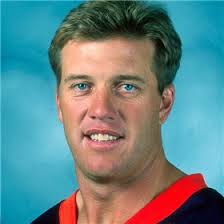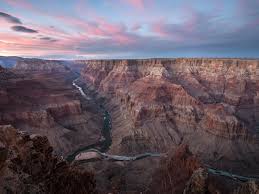JANUARY 11 — 1757 Happy Birthday Alexander hamilton; SPORTS: 1984 Nuggets beat Spurs 163-155 (highest non-OT scoring game), 1970 KC Chiefs beat Vikings in Super Bowl,1987 John Elway executes The Drive
JANUARY 11
11 1755/57 – Happy Birthday Alexander Hamilton.
He’s the guy on the $10.
Alexander was born out of wedlock in the Caribbean, back then the West Indies, to Rachel and John Hamilton, who divorced when young Alexander was around 11 years old. Hamilton attended Columbia U, back then it was Kings College, and became a vocal supporter of the Boston Tea Party as well as other insurgencies against the British.
After the Revolution started, he became captain of artillery and earned the respect of General George Washington as Hamilton fought bravely in the Battle of Trenton, Long Island as well as the British retreat in Yorktown. In 1780 he married Elizabeth Schoyler, daughter of the very distinguished major general and land owner Philip Schuyler. Not that I’m accusing Hamilton of being power hungry or anything, but since the Schuylers were close to the politically prestigious Livingston family, Hamilton had established his social rank amongst his people.
This gave him a chance to exercise his opinion about having a strong, central government. Hamilton wanted the federal government to have complete power over all the states, and began writing essays with James Madison and John Jay for the Federalist, which was a heavy influence to this day on interpreting the Constitution. In 1789 President Washington appointed Hamilton Secretary of the Treasury.
He was tasked to come up with an economic program to provide adequate support of public credit. He divided his program into four parts, which I cover in detail on another ep. The first two points to Hamilton’s programs were called Reports on the Public Credit. The Revolution left America in serious debt. With phrases written in the Constitution such as Implied Powers and General Welfare gave Congress the authority to fund the national debt at and assume state debts through the newly formed Bank of the United States, which brings us to his third point, entitled Report on a National Bank.
Interpretation of the term General Welfare came into play in his fourth report, Report on Manufacturers. This would be general welfare on the federal lever of course, never a state level, and it was designed to encourage commercial and industrial development all over the new nation. In politics, President Washington was really hoping the new America was beyond party lines. You know, one side bent on leading the nation this way and another leading the nation that way. It didn’t take long. National rights vs states’ rights and France vs England were the two big hot topics and you couldn’t have it both ways.
France was having a revolution and Hamilton wanted nothing to do with it and sided with the English during British-French hostilities. Thomas Jefferson and James Madison had shared Hamilton’s Federalist views during the 1780s, but during the 1790s this had changed and the Republican Party, or Democratic-Republican as it was formally called, was born to oppose the Federalist Party.
Finally having enough, in 1795 Hamilton resigned from the Treasury to practice law and continued to be active in the Federalist Party. After John Adams replaced George Washington as president of the United States, Adams kept much of Washington’s cabinet. Though highly critical of President Adams, Hamilton used his influence to persuade his cabinet to enforce Federalist ideals. In September 1798,
President Adams suffered a humiliating blow to his ego when former president Washington forced him to make Hamilton second in command of the army with the rank of inspector general during the Quasi War with France that was going on. Hamilton and President Adams would openly argue over policy, and in 1800 he threw his support for his political enemy Thomas Jefferson who won the Presidency, over Aaron Burr and Adams, not the first or last times Hamilton would thwart Aaron Burr’s rise to power. In 1801, Hamilton was settled in New York and began publishing the New York Post, which started out as a Federalist paper. Obviously. When Burr ran for New York governor, Hamilton threw his support for Burr’s Republican opponent, who would win.
This probably didn’t affect the outcome, but it looked at the time like Hamilton again foiled Burr’s ambitions. The feud between Hamilton and Burr continued to escalate, until the duel that Burr won on July 11. Which I go in complete detail by the way on my July 11th show. Spoiler alert, stay tuned. Yes, as a very anti-climactic finish to the story of our first Treasurer Alexander Hamilton, he died when Burr’s bullet did not miss, at the very same dueling spot Hamilton’s son fatally lost three years prior.
Hamilton left behind a wife and seven children in serious debt that would be paid for by friend and writer of the Preamble to the Constitution Governor Morris.
Happy birthday Alexander!
1908 – Teddy Roosevelt makes Grand canyon a national monument. This magnificent 277 mile gorge has been habituated by Native Americans since the 13th century, and Spanish settlers ran across it in 1540. When President Theodore Roosevelt saw it, he had special plans for it: leave it exactly the way it is. “You cannot improve on it. But what you can do is keep it for your children, your children’s children and all who come after you as the one great sight which every American should see.” And seeing it is something you just have to do if you haven’t already. Rough Rider Roosevelt had a thing for the old west, even though he was from New York. When President McKinley was shot and died from his wounds, Rough Rider took over and conservation was one of his primary agendas. If you want to check out the park, you’ll be one of 5 million people to do so this year. It features whitewater rafting, hiking, running, or just check out the view. The canyon’s South Rim, at 7,000 feet above sea level, will absolutely take your breath away.
1877 – J. Lloyd Haigh sells bad cable. The Brooklyn Bridge, which has four suspension cables, had to be spun of wire hundreds of feet into the air. The strength of the bridge itself depended on the cables being spun to precise specifications. Turns out the cables were inferior. A cheesy contractor named J. Lloyd Haighs won the contract to supply the steel for the cables, and New York City mayor Abram Hewitt was in on it. Hewitt had a holding interest in Haigh’s steel mill, you see. What a coinkidink. Luckily for the bridge and everyone on it, its designer, Washington Robling, knowing that Haigh was corrupt due to his reputation, designed for the bridge to have six times the amount of cable it actually needed. By the time the inferior cable was discovered it was too late, and to this day, it’s still interwoven in the bridge. Alright Labor Day fans, you should like this one.
1937 – Battle of Running Bulls. Flint, Mich. United Auto Workers, or the UAW v General Motors. The result: resounding UAW victory. The UAW wanted GM to respect it as being the sole bargaining authority for employees at the company’s factories. In general, many sympathized with the union workers, who were simply asking for better working conditions and job security.
Almost two weeks into a sit-down strike by GM workers, on January 11 1937 riots and tear gas broke out right outside Fisher Body 2 as police shut off the heat, locked the gates to the plant, and removed the ladders that were being used to supply food to the workers. The National Guard was called in to preserve order, and President FDR got involved with negotiations to end the conflict. On February 11, the Sit Down Strike was settled when GM recognized the UAW as the negotiator for its members. In Super Bowl news:
1970 – KC Chiefs beat the Vikings 23-7. Len Dawson was the Chief’s MVP. 1984 Denver Nuggets beat the San Antonio Spurs 163-155, the highest non-OT scoring NBA game in history.

1987 John Elway executes The Drive. Late in the 4th quarter with the Broncos trailing the Cleveland Browns, they started out pushed all the way back on the 2 yard line. Broncos offensive guard Keith Bishop boldly said, we got them right right where we want em. You do? You’re on the 2, you’re losing this game and it’s almost over. But Elway knew what he was doing and drove 98 yards down the field and into the end for a touchdown, tying the game. The Broncos would win in OT 23-20.


